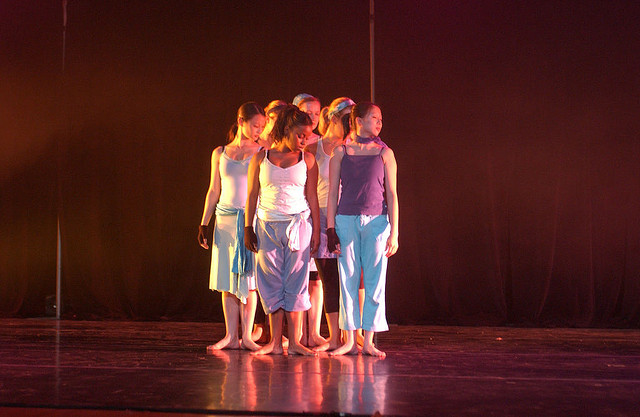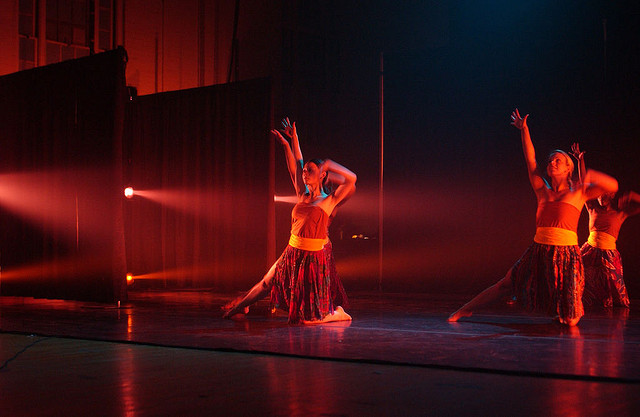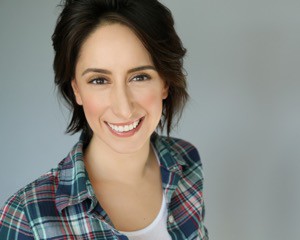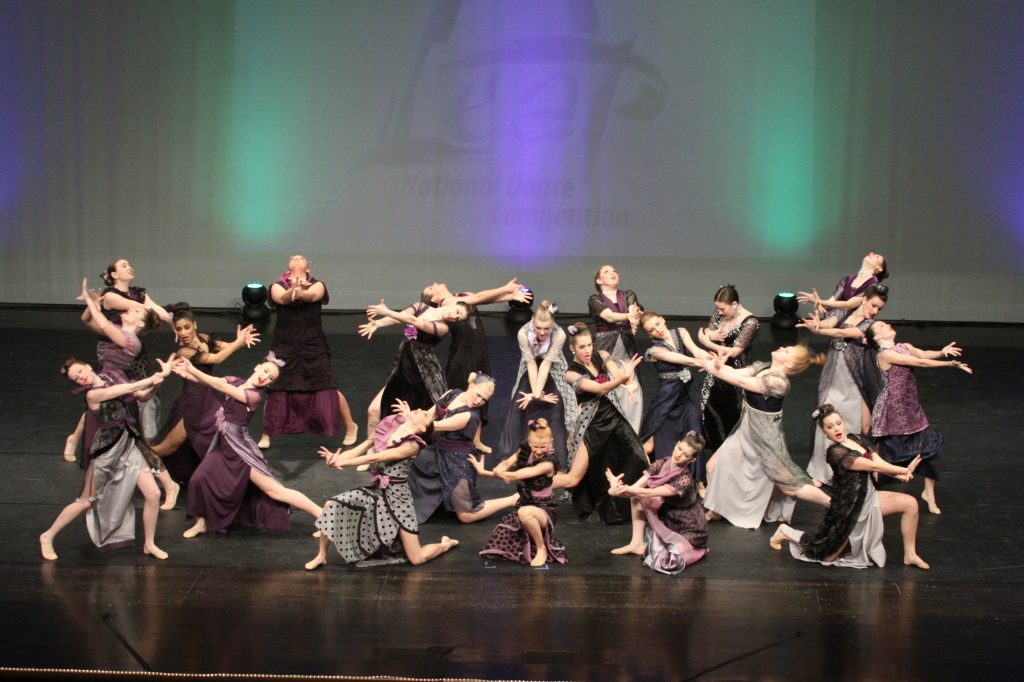
by Karen Musey
There is always one thing I’d love to tell dancers while watching competition pieces:
Pauses are powerful. Could you find more in your piece?
Judges watch 2 + minutes of choreography that is often packed to the brim. Feeling the crunch to “fit everything in” and their adrenaline pushing them forward, the dancer is only able to half-finish a movement in order to get to the next in time.
I know dancers want to demonstrate as much as they can and choreographers want to give their dancers challenges they can grow into. I absolutely support you in wanting to grow and be your best self.
But how do pauses affect a piece of choreography’s impact on an audience?
Pauses in choreography allow for the dancer’s expression in a piece to change and evolve. If there are no changes in energy, the choreography can become indecipherable like a run-on sentence: the dancer and audience hold their breath and everyone wonders why they are exhausted after.
Audiences notice the dancer’s interpretation of the peaks and the valleys of the choreography. They feel the inhales and the exhales. They react to the energy dynamic of a go or a stop. The emotional quality and thoughts behind a comma, the excitement of an exclamation mark! The stillness of a period.
To hold space onstage with stillness requires vulnerability. It feels very powerful and creates anticipation. Being onstage with “nothing to do” can feel overly revealing. I will tell you though –
Every piece I’ve watched that won top awards had the dancer(s) commanding powerful pauses in their choreography.
What can you do to find and craft the pauses?
Understand The Intention Behind Your Choreography.
This is an important step whether you are in the process of picking your music, are in the midst of creation, or while perfecting the choreography.
Why was this particular piece of music or theme chosen? Is there an intention to explore a topic, a way of moving, a way of expression? How do you personally relate to the song/theme and how can you grow from it?
What if it is a foreign way of moving, expression or style that you do not yet relate to?
Will taking extra classes help you acquire a clearer competency of the style? Could watching current events or movies that relate to your subject matter give you a better comprehension of the idea? Could you discuss with your teacher/choreographer and peers how you can interpret a more truthful and revealing expression of the piece?
When you relate to and understand the intention behind your choreography, you will be able to break it down and find dynamic through pauses.

snickclunk. Licensed under CC Attribution 2.0 Generic.
Get Comfortable With Stillness.
Improv is a great way to experiment with pauses. If you improv and can find places to be still, discovering and owning the pauses in your own choreography will be easy and fun!
Choose different pieces of music to improv to that have varied types of pauses. Some may be static and sharp; others might be subtle or lengthy. Having your teacher create artificial pauses by hitting pause while playing the music can also accomplish this (similar to freeze dance, but for improv!). Allow yourself to relax and breathe in whatever shape you have created – feel the architecture of the shape and be open and curious to what thought or expression that shape could be endowed with.
The more you explore different types of pauses, the more you will become creatively curious in how you shape them in your choreography.
Nervous Tension vs Powerfully Creating Space.
What is the difference between tensely holding a pose or feeling the shape of it and breathing into the space around you?
Sometimes tension in poses is beneficial and creates a certain feeling in the piece; other times it stops breath, creates anxiety and uproots the dancer from their connection with the floor. If a dancer tensely holds a pose without breathing and with nervous energy, they often have difficulty easing into the next part of the choreography and have to play catch up.
Knowing exactly how many counts your pause is and how you can continually fill and shape it with energy and breath will keep you grounded, focused and in command of your choreography.
Slow Down.
What if you are already working on a set piece and it is choreographically dense without discernible pauses? Yay! What a great challenge for you.
First, slow your music down to a speed that you can easily complete the steps with. The slower, the better. You can use Garageband or other music programs to quickly adapt the speed of your music. If you articulate your movement at a more workable pace, you will start to notice all the different types of little pauses that can be found in between each phrase of movement.
Then – when you are able to fully commit to and finish your movement with the phrasing in place, you can gradually start to quicken the tempo. You will have developed the coordination and clarity you need for a more defined, polished piece of choreography. The pauses, phrasing and artistry of the piece will be intact, leaving you feeling powerful about the interpretation you want to showcase.
~~~
By taking the time to investigate your choreography early on, you will create the possibility for fantastic performing opportunities down the road. Enjoy the journey

Contributor Karen Musey is a dynamic Canadian born, New York based performer,teacher and dance adjudicator. Her training includes study at Canada’s Royal Winnipeg Ballet Professional Division, The Banff Centre, EDGE PAC (LA), Upright Citizen’s Brigade, The Barrow Group, Kimball Studio, Canada’s National Voice Intensive, Comic Strip Live and more.
Karen Musey judges national and regional dance competitions and festivals across the United States and Canada. She was a Director/Choreographer Observership Candidate during the 2011/12 season with Stage Directors and Choreographers Union and has served as a rehearsal director and dance captain for KOBA Family Entertainment. Karen Musey is an ABT® Certified Teacher, who has successfully completed the ABT® Teacher Training Intensive in Pre-Primary through Level 5 of the ABT® National Training Curriculum. She is a U.S. Member of the International Dance Council CID, recognized by UNESCO.
Performing highlights – PHISH at Madison Square Garden; World Premiere of the Canadian Opera Company’s Das Rheingold (Wagner Ring Cycle); National Artist Program Gala for the 2003 Canada Winter Games; for HRH Queen Elizabeth II during the Golden Jubliee Tour; Chicago (Rainbow Stage); comedy short Foreign Exchange (72 Hour Asian American Film Shootout); music videos for The Guards and Malynda Hale; international tours and performances with The Young Americans, J.A.R. Productions and KOBA Family Entertainment; stand up and sketch comedy around New York; Bravo! documentaries, films and more. She is currently co-writing a play. www.karenmusey.com






